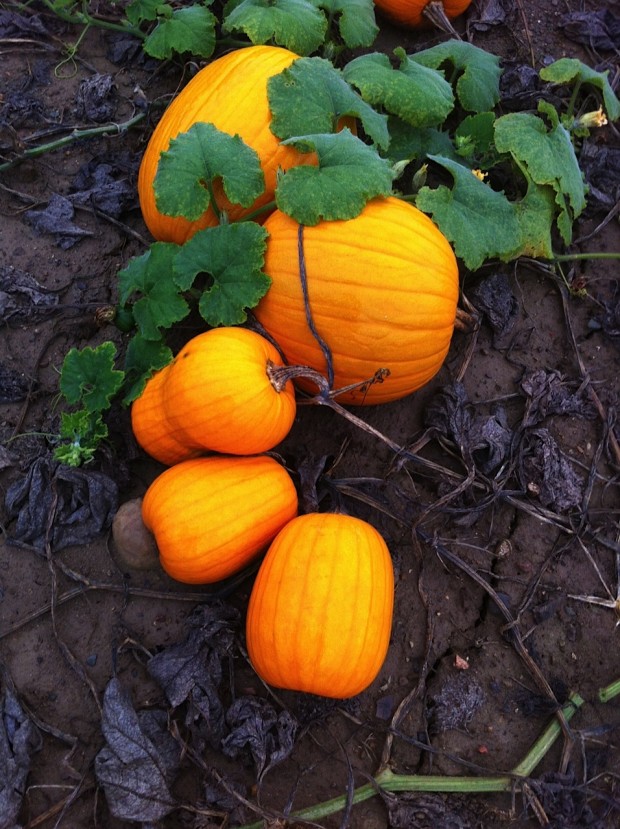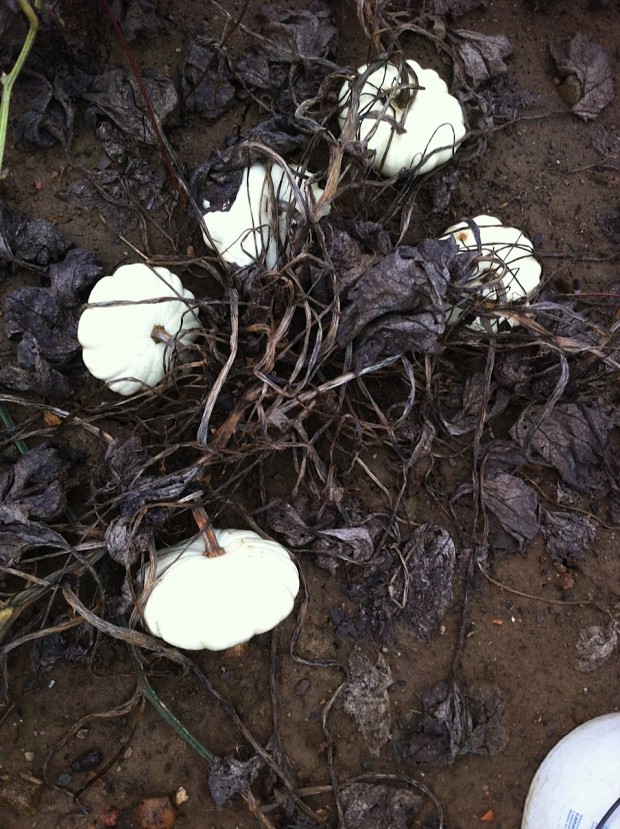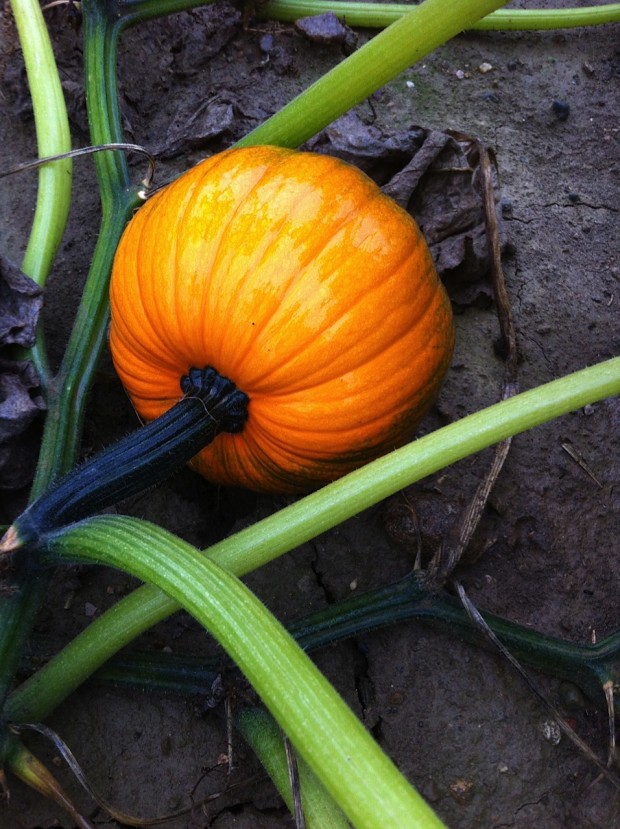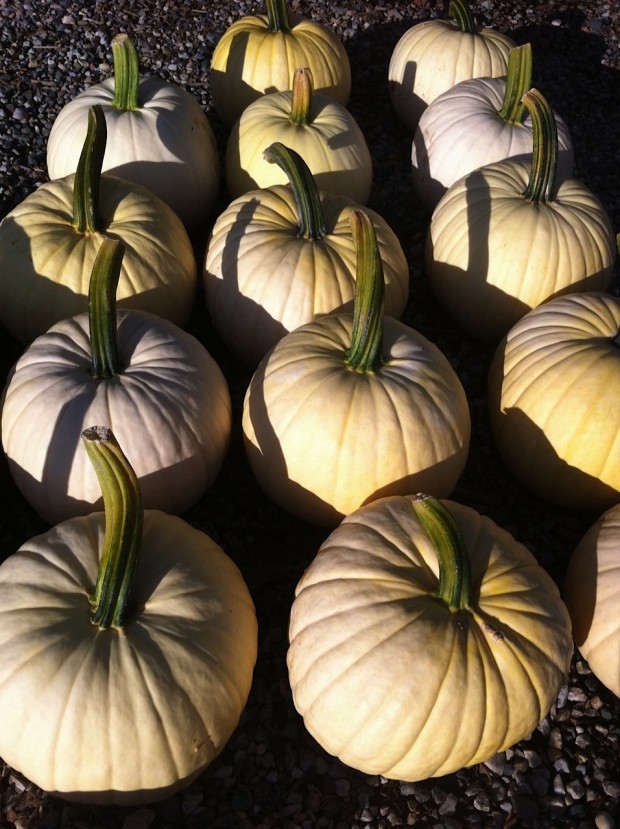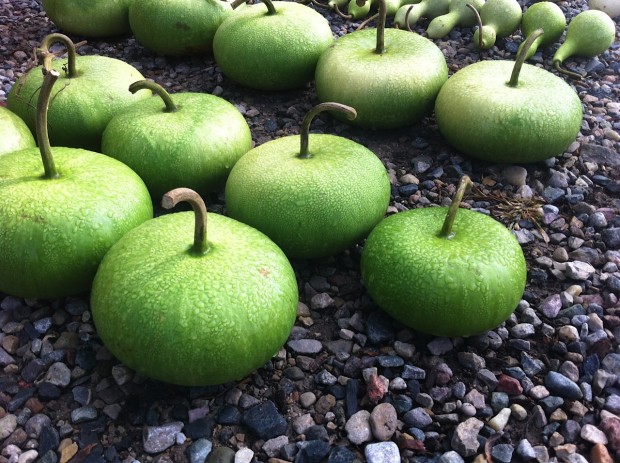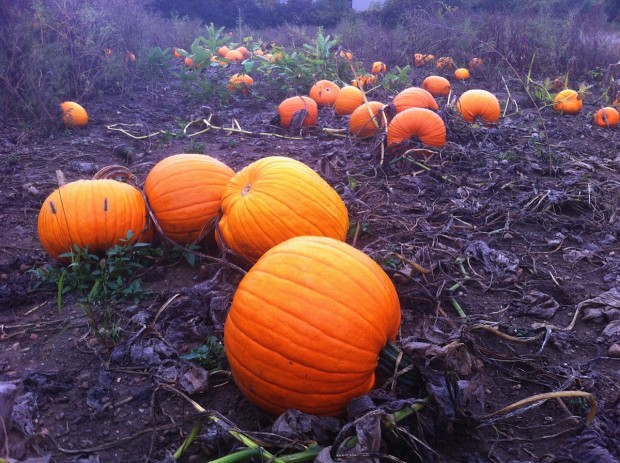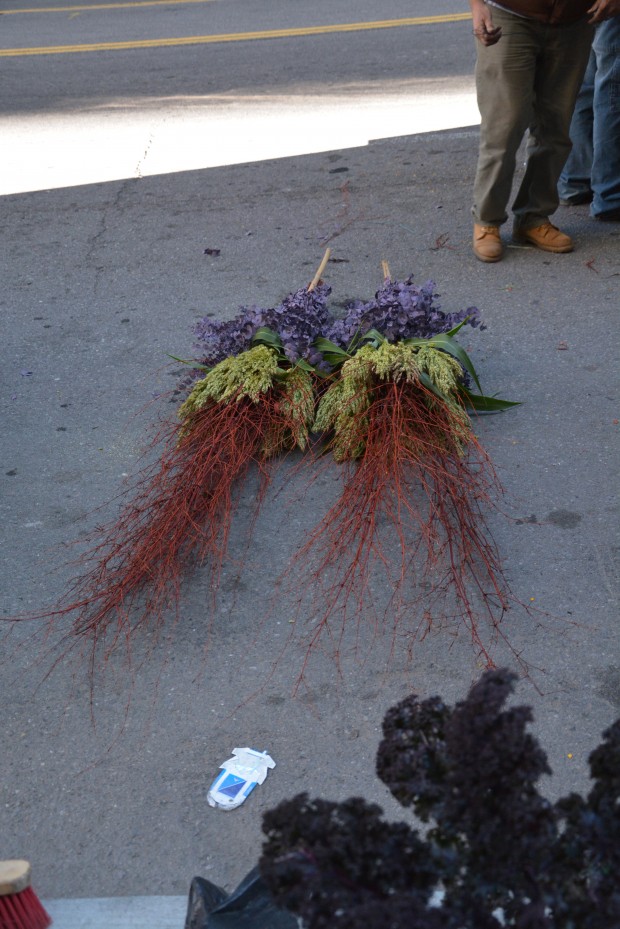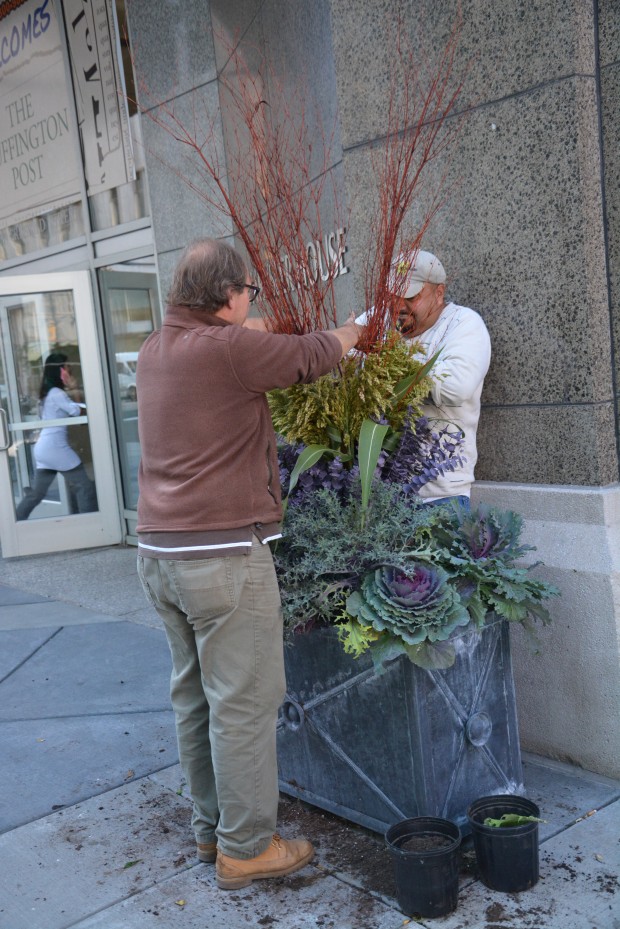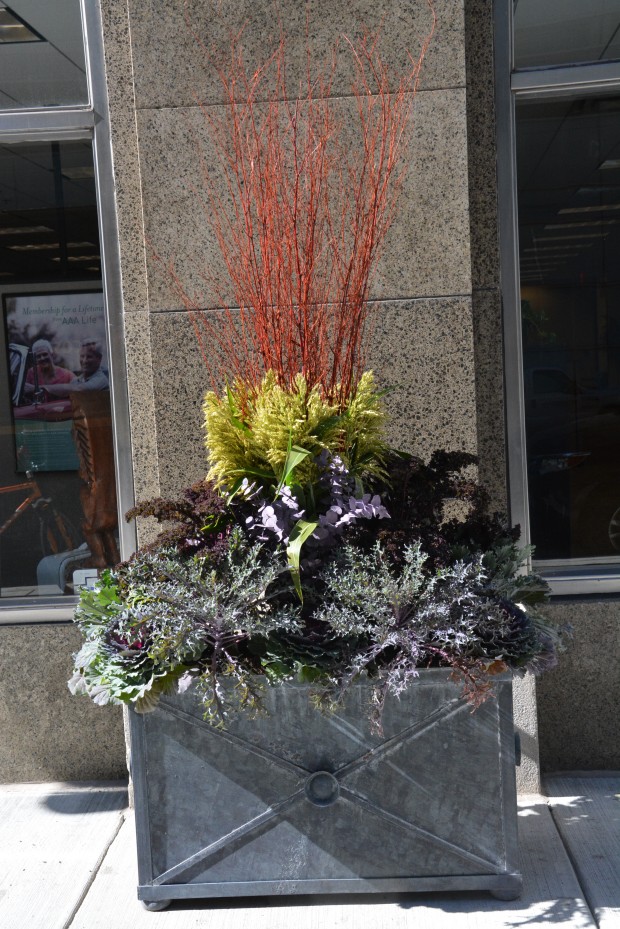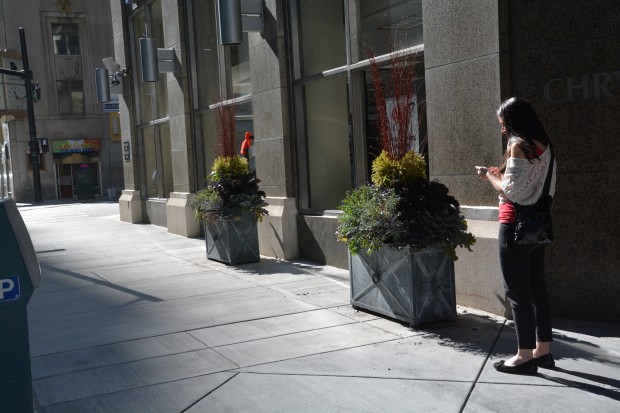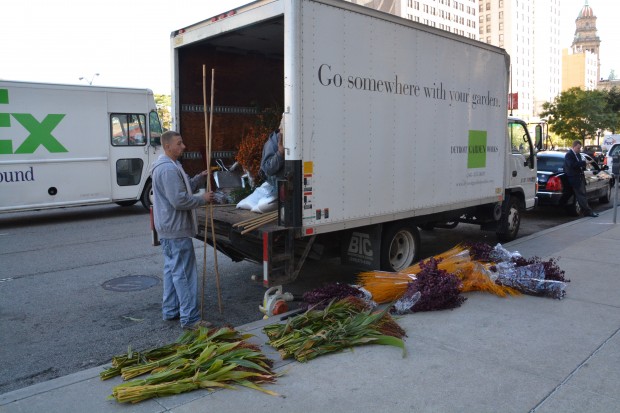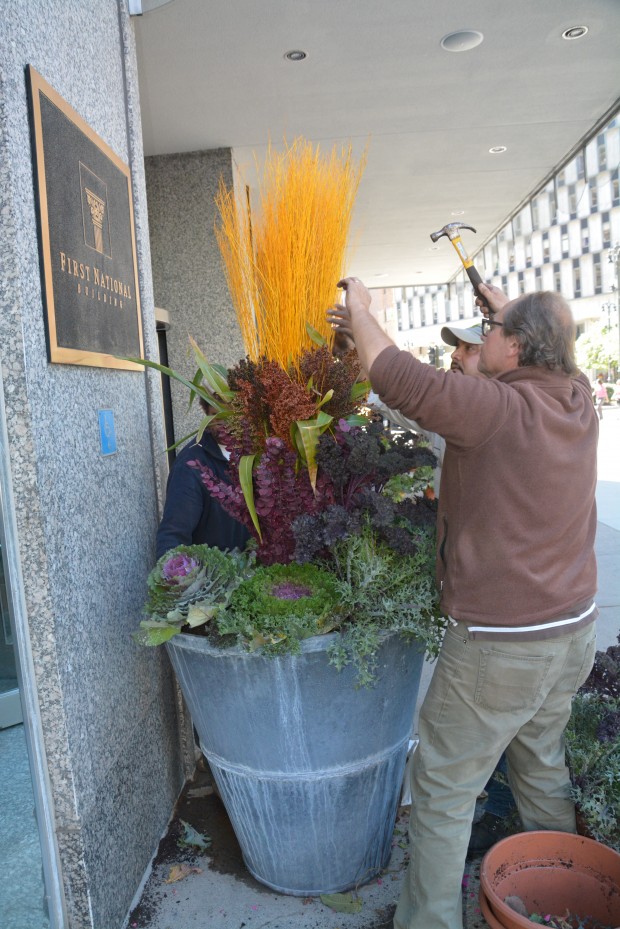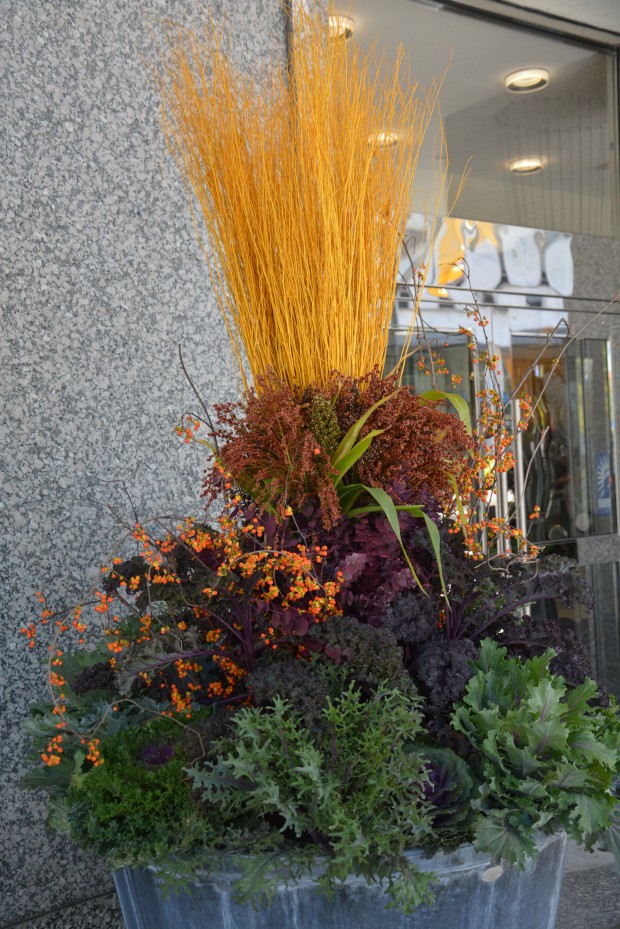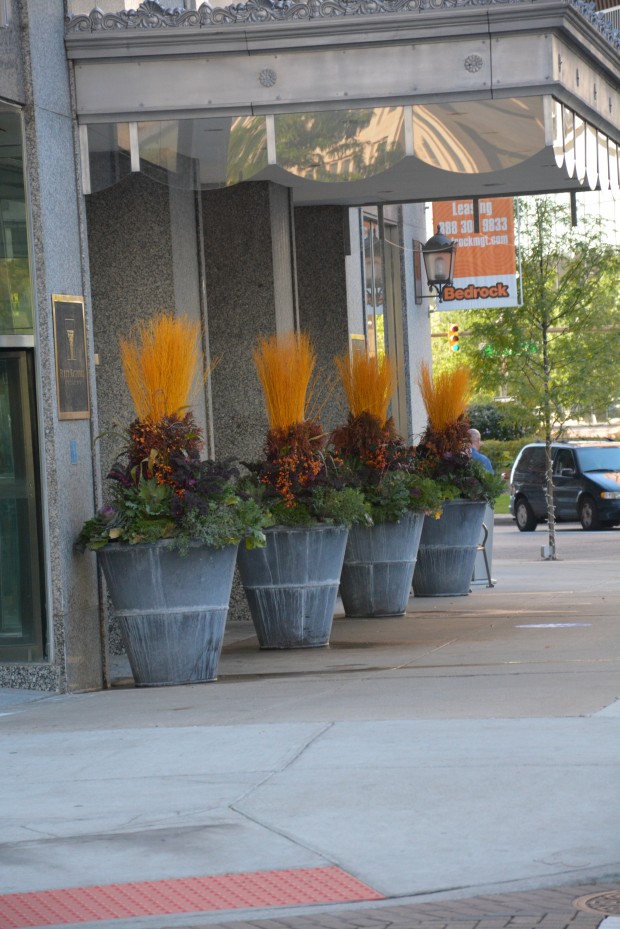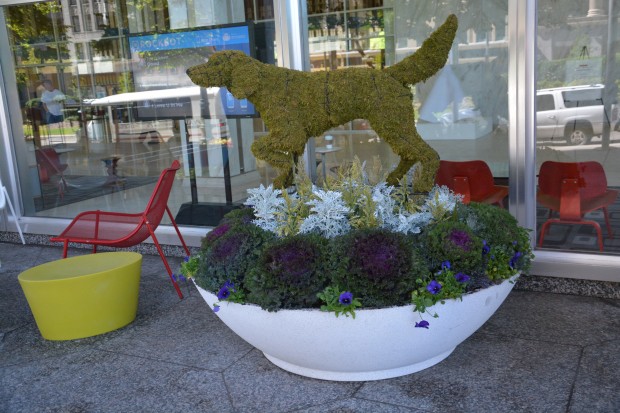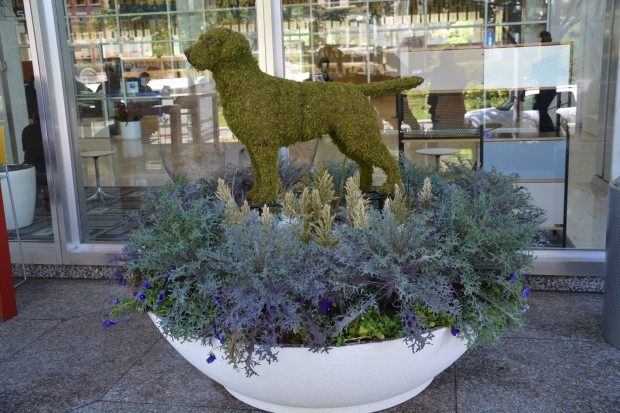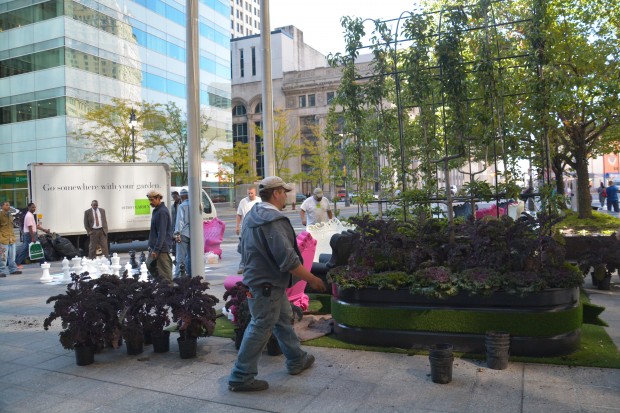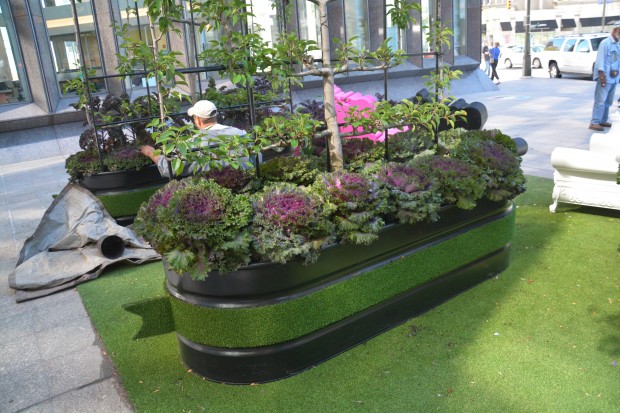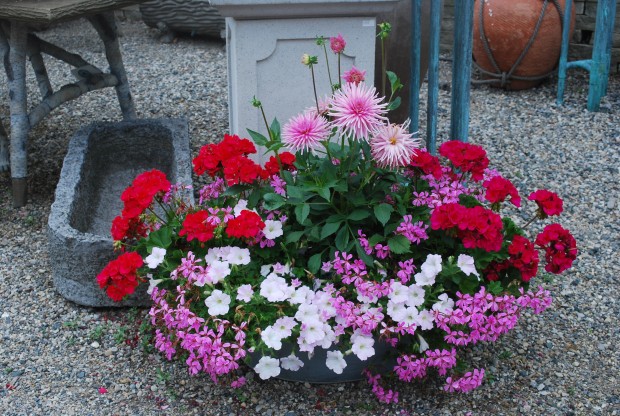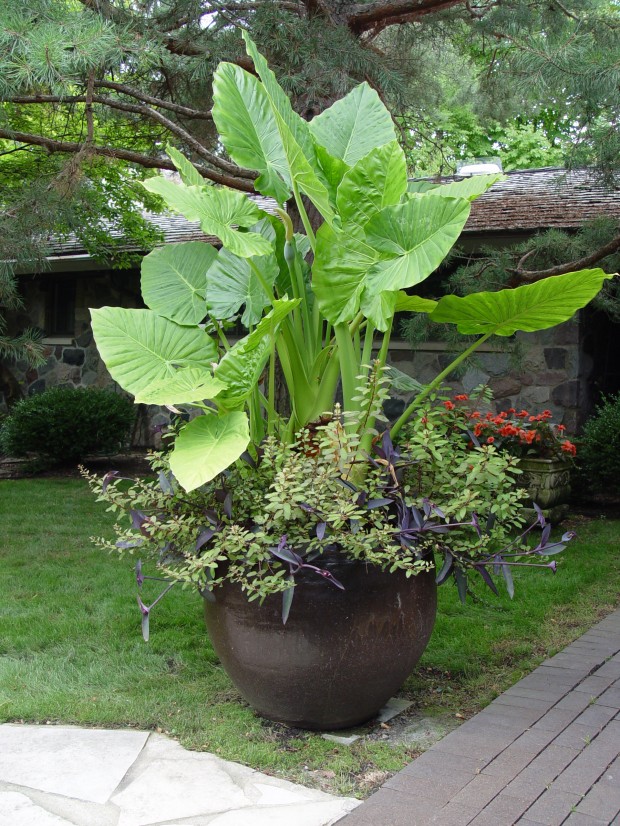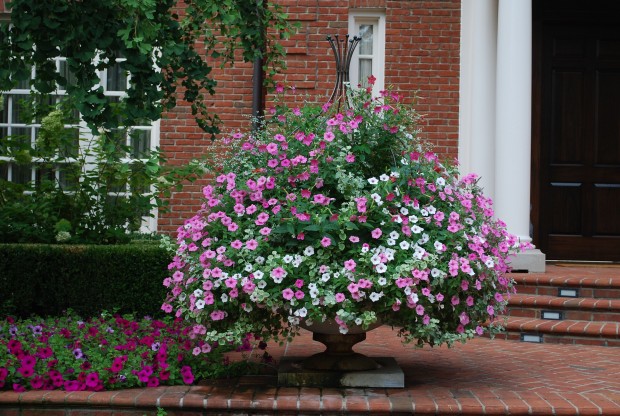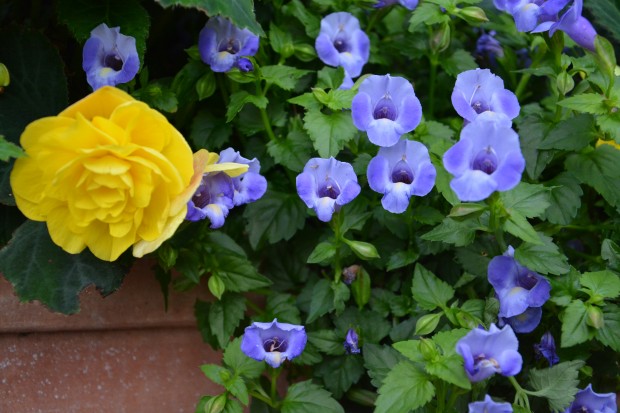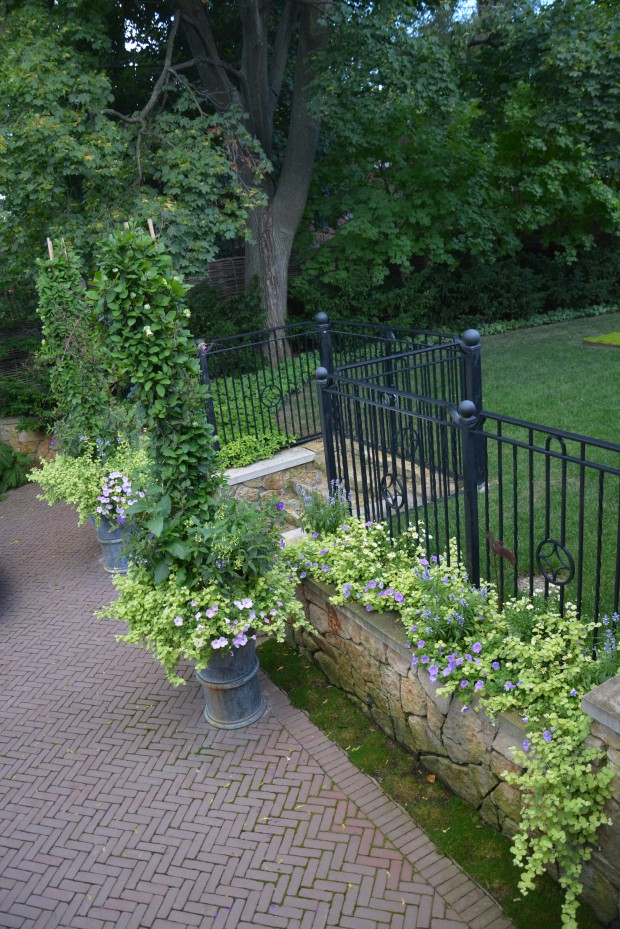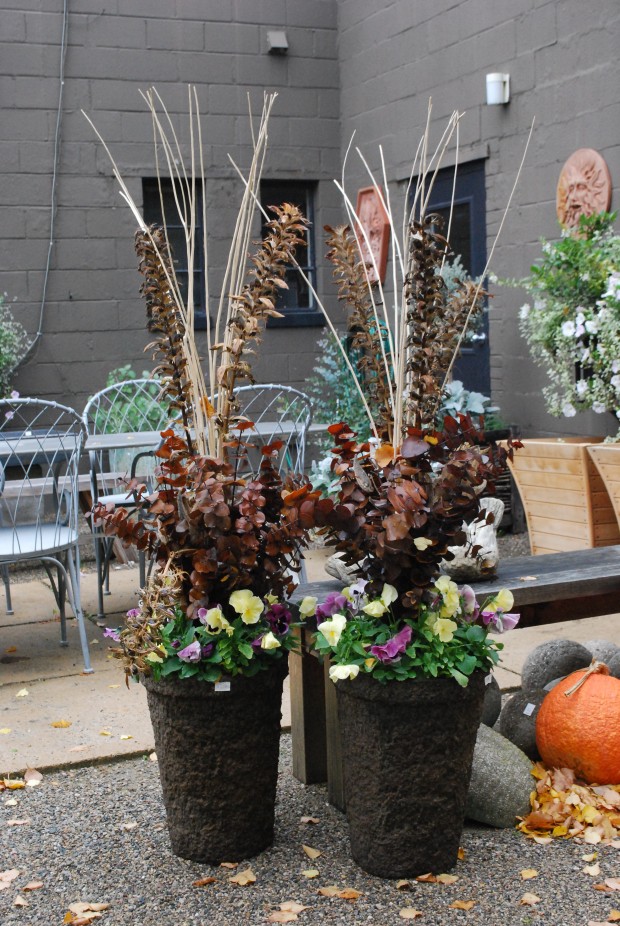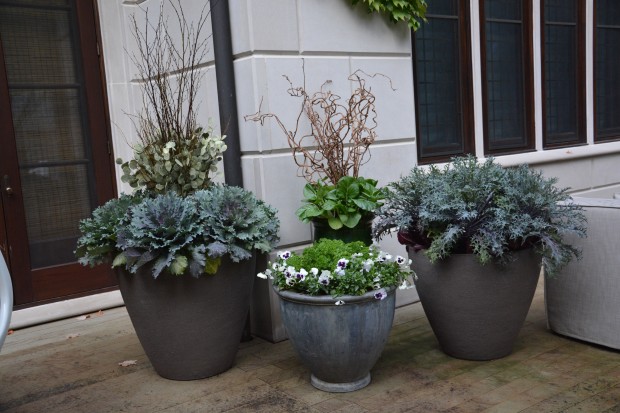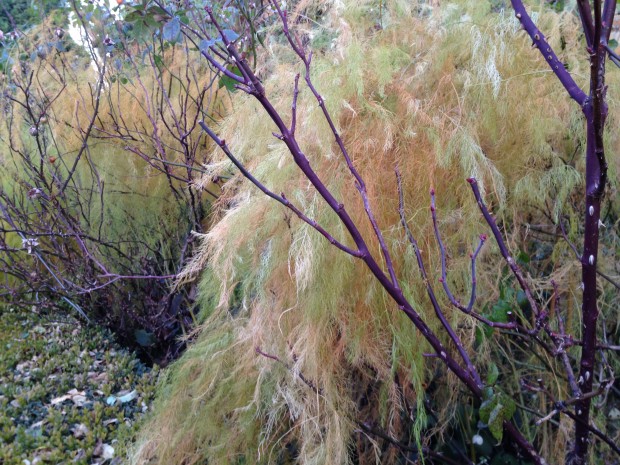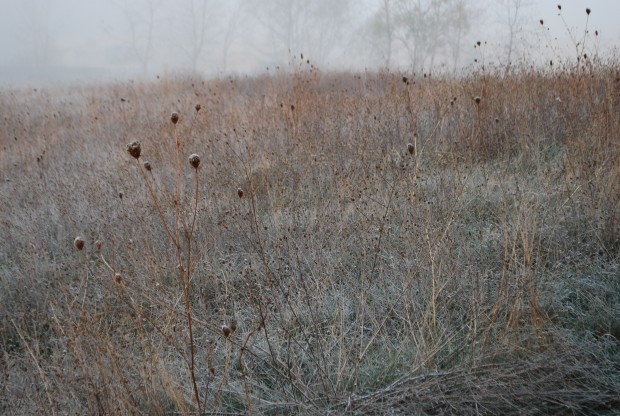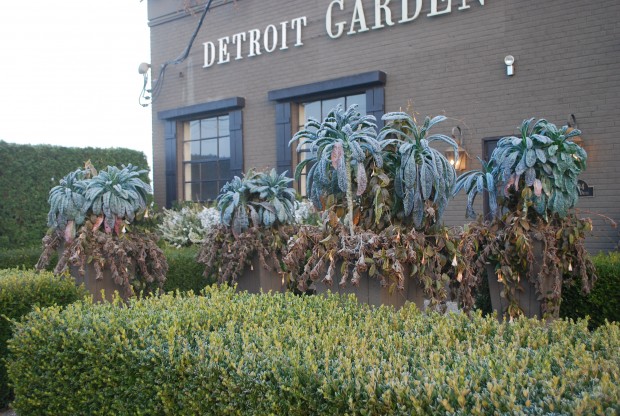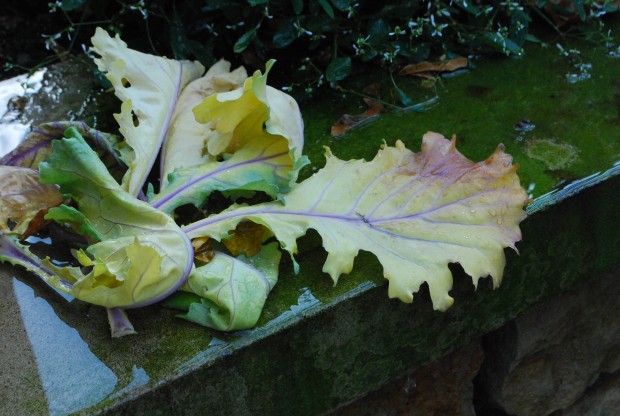 The pictures from Rob’s trip to the pumpkin patch are eloquent in their description of the change of the season. The pumpkins and squash are brilliant in their mature coloration. The fruits of the harvest are juicy and robust.
The pictures from Rob’s trip to the pumpkin patch are eloquent in their description of the change of the season. The pumpkins and squash are brilliant in their mature coloration. The fruits of the harvest are juicy and robust.
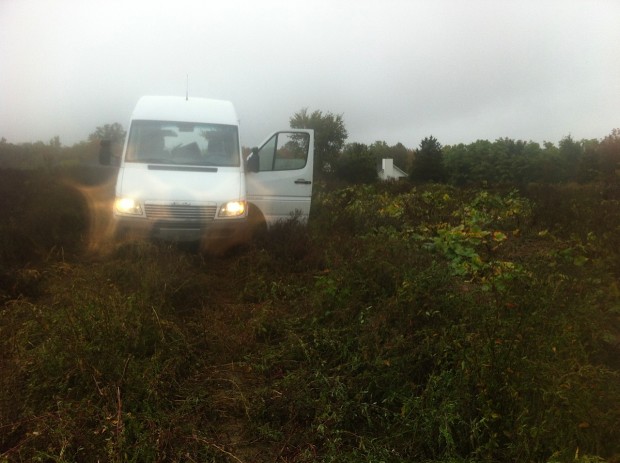 At the same time that the pumpkins are coming into their glory, the vines that nourished them are fading and blackening from cold. At the time of the harvest, the vines have completed their life span.
At the same time that the pumpkins are coming into their glory, the vines that nourished them are fading and blackening from cold. At the time of the harvest, the vines have completed their life span.
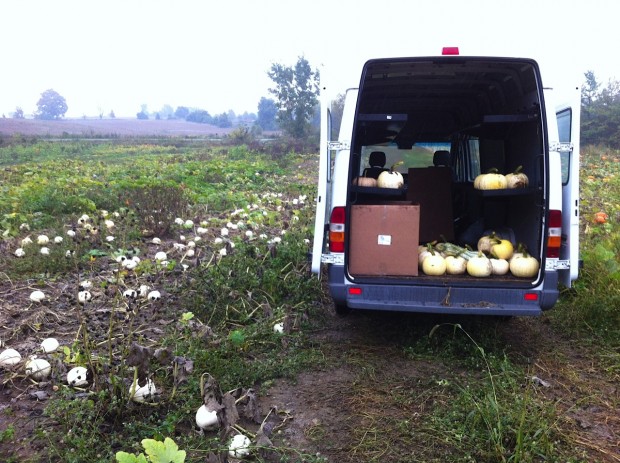
Rob says this annual trip to cut pumpkins is one of his favorite moments in the gardening year. As usual, he chooses materials for the shop that reflect his point of view about what is beautiful. There’s not much more to say, other than the fact that his photographs tell a story I never tire of hearing.
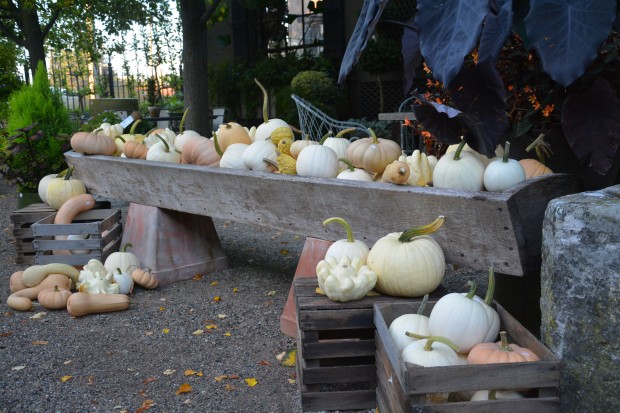 hand picked for Detroit Garden Works
hand picked for Detroit Garden Works
